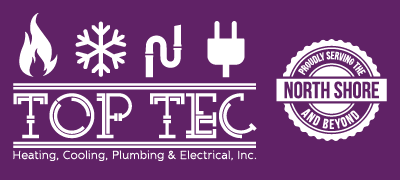
A furnace is usually a background player at home, helping keep you warm across the cold winter months. It regularly doesn’t get noticed until a malfunction appears.
One cause may be that your furnace has a cracked heat exchanger. It can potentially be hazardous, so it’s important to know the evidence of a cracked heat exchanger and what to do if you are worried that may be the problem.
What Is a Heat Exchanger in a Furnace?
A heat exchanger helps transition heat from the combustion chamber inside your furnace to the air that flows inside the ventilation. It generally does this using coils or tubes that heat the air while acting as a barrier to keep gas formed in the combustion chamber, called flue gasses, from leaking out into your home.
Is a Cracked Heat Exchanger Dangerous?
Because of its important role, it’s no surprise that a damaged heat exchanger can be hazardous. A crack in the heat exchanger can allow dangerous gasses – like carbon monoxide, which can be lethal – to flow through your home.
For this reason, never run your heating if you suspect there's a crack in the heat exchanger, as letting it run could make the whole family sick. Reach out to an HVAC professional immediately if you believe your heater has a cracked heat exchanger that should be repaired.
Four Symptoms of a Cracked Heat Exchanger:
- Furnace switches off: A cracked heat exchanger could cause your furnace to turn off.
- Strange Smells: If the air coming out of your furnace has an intense chemical odor, it may be a sign gas is seeping through cracks in your heat exchanger. These gasses, which may smell like formaldehyde, are a major warning sign.
- Carbon monoxide alarm is triggered or you recognize poisoning symptoms: If a cracked heat exchanger is emitting carbon monoxide inside your home, your carbon monoxide alarm may go off or household members may start experiencing signs of carbon monoxide poisoning. Symptoms include headaches, dizziness, weakness, nausea, vomiting or feeling drowsy. If the alarm goes off or you feel sick, leave the home immediately and then call for help.
- Soot: If you spot black sooty accumulating on the exterior of your furnace, it’s more evidence something may be seriously wrong.
What to Do if the Furnace Heat Exchanger is Cracked
If you believe your furnace has a cracked heat exchanger, call a pro experienced in furnace installation Libertyville right away so they can examine your system and, if needed, handle a furnace heat exchanger replacement. Costs should differ depending on the situation, but estimates often hover around $1,000 to $3,000.
However, the good news is that heat exchangers are generally protected by the warranty. You should check the warranty paperwork on your furnace, since while the warranty might not cover the entire cost of repairs, it could significantly shrink your bill.
How to Prevent a Cracked Heat Exchanger in Your Home
One of the most convenient ways to avoid problems in your furnace overall is through consistent furnace maintenance. Furnaces offer the most benefits when they work efficiently. Contacting a certified professional to check your furnace for old parts, clogs in the air filters and other likely problems can keep you from getting a big bill later on.
It’s also beneficial to take a look at your furnace filters every few months – it’s recommended some filters be replaced every 90 days or sooner if they are dirty or grimy. While the filters are not part of the heat exchanger itself, the strain of dragging air through a clogged filter makes the entire furnace work more vigorously to complete its job. And the harder your furnace works, the more deterioration parts like the heat exchanger will sustain.
